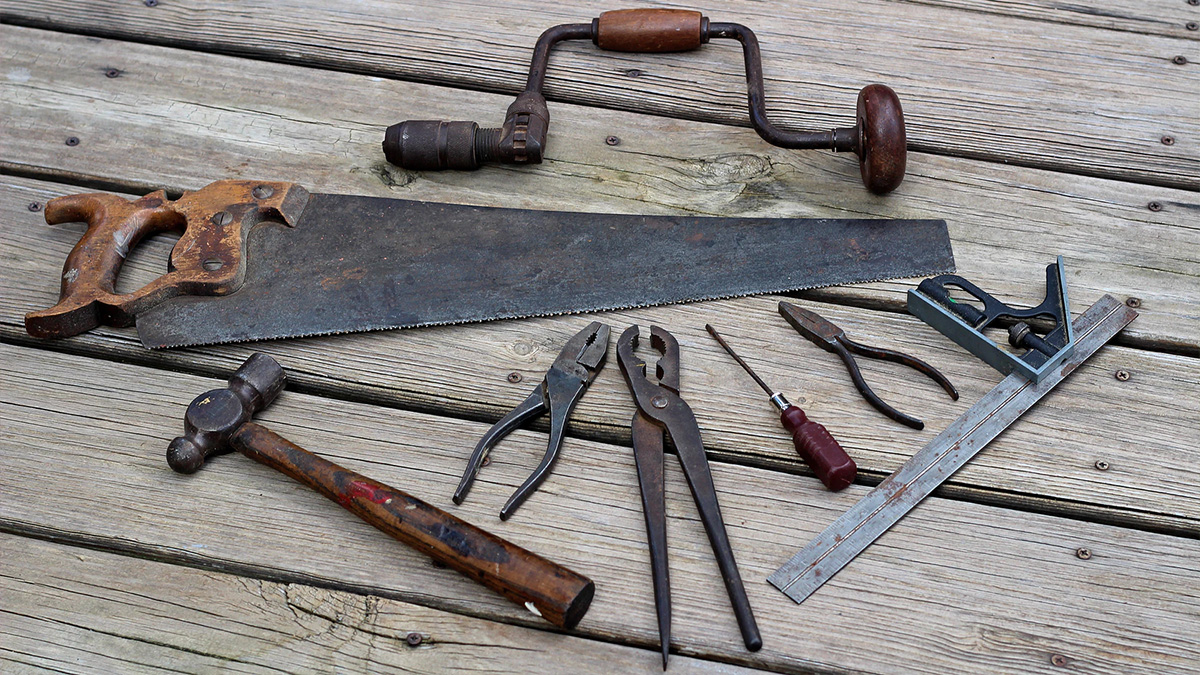When it comes to hand tools there is nothing quite like the old ones that were built for longevity. But time takes it toll on inanimate objects just as much as it does on us, especially when not properly cared for.
There are ways to reverse the aging process for old tools. It is a little complex and definately time consuming, but the end result is worth it if you appreciate the practicality of old tools.
Twelve steps to tool restoration
- Wash the tool in luke-warm soapy water. If you need to scrub, use a brush with plastic bristles and a non-abrasive cleanser. Do not use steel wool!
- Rinse and let stand to dry for 6-12 hours.
- Soak in lemon oil for 24-48 hours. This helps the metal as well as the wood but for long handled items, a new handle is often your best bet, plus it is easier to soak just the head of the tool.
- Remove from the oil and let stand for for 2-3 hours.
- Smear the wood and metal with a mixture of 50% lemon oil and 50% beeswax. Let stand for 24-36 hours.
- Wipe excess off wood. Scrape metal, if needed using a dull knife. Wire brush if you have to.
- Apply butcher’s wax to wood. Either “Boston” or “Bowling” paste will work, but the latter gives a harder finish.
- Let stand for 24 hours then buff.
- Apply a 2nd coat of butcher’s wax, let stand again for 24 hours and buff.
- Apply a 3rd coat of butcher’s wax, let stand again for 24 hours and buff.
- Store tool for 7-10 days to cure.
- Buff with a soft bristle brush.
The reconditioning is good for 2-3 years depending on use. Longer if you are just going to use the tool as a decorative item. (Note from Jane: Get double duty from old tools – decorate your home or outbuildings with them, and when the SHTF you have tools ready to be pressed back into service.)
If the metal needs some extra help, try heating it (make sure no wood parts are attached!) until it is too hot to handle. This allows the “pores” to open up. Then rub beeswax into the surface. After the metal cools, scrape off the excess wax with a dull knife or a plastic scraper.
This process can be used to condition newer tools as well and helps them last longer especially if you live in a humid climate.

